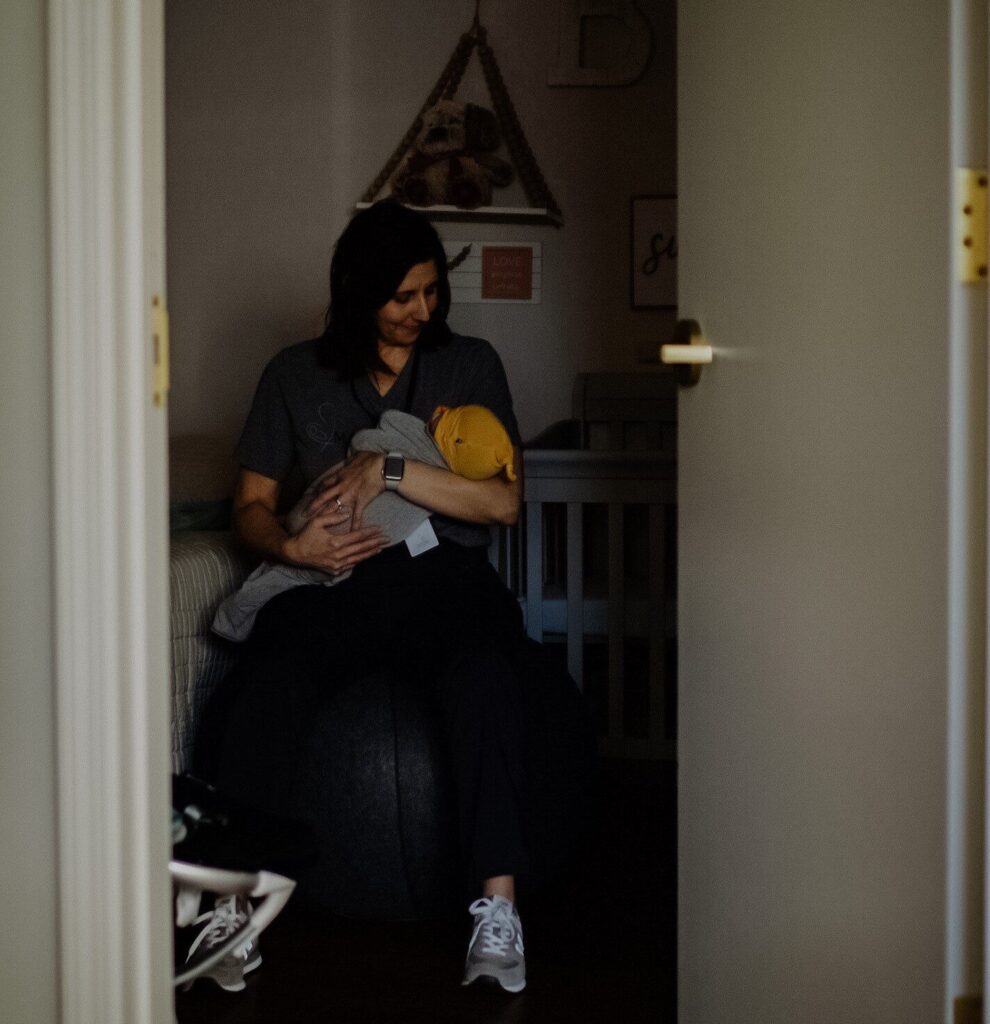It was a terrible cry. High pitched and unforgiving, it seemed to last for hours. Tricia held baby Maddie close, ignoring the heat radiating from her little body. She had tried every method she could think of to soothe a sick baby, but nothing seemed to work. Maddie was different. She despised being put down but would squirm and fuss at touch. She cried anxiously for food but would be disorganized and unable to latch. It seemed as if her whole body was riddled with intestinal stress, increasing her anguish.
Something was very wrong.
This was something Tricia had never seen before– and as a labor and delivery nurse, you’d think she had seen everything. But every doctor said Maddie was fine. Tricia was on her own.
Soon, she discovered that Maddie was exposed to illegal drugs in utero. While it was a step in the right direction, Tricia quickly found that there was little to no research on how to care for a baby suffering through withdrawal.
Thus began a season of trial and error, where Tricia learned Maddie’s likes and dislikes, what kept her regulated and what sent her into a frenzy.

It was from this hard season that a passion for babies exposed to substances grew in Tricia’s heart. It was from this hard season that 14 years later, Maddie’s Place welcomed its very first newborn. It was from this hard season that Tricia would pass along the invaluable skills she learned to our staff.
Before I explain some of the methods Tricia discovered, keep in mind that babies are sensory beings. In other words, they interpret everything in the world through their senses. This is what guides their growth and development. However, when a baby is born exposed to substances in the womb, these senses are severely delayed or disrupted. It is as if their nervous system is on fire, making it so that normal sensory input is excruciating to them.
Now, here are just a few of the ways we seek to reduce sensory input and set our infants up for a healthier future.

First, we try to position our babies vertically. While you may be familiar with rocking a baby horizontally and side to side, a baby with Neonatal Abstinence Syndrome (NAS) cannot tolerate this. Why?
Think about it. For the first nine months of a baby’s life, they are floating in amniotic fluid. They can exist in this way because their vestibular system, which includes neural pathways that communicate messages about space and balance, has not been activated yet. Typically, this system kicks in when a baby is born.
However, this is not the case for a baby with NAS. At birth, their brain is disorganized, and their vestibular system has not been activated. So, the typical rocking and side to side movement, no matter how gentle, signals stress to a baby’s brain and sends them into dysregulation.
To avoid this, we keep our babies upright, squatting up and down, as opposed to rocking side to side. This rhythmic motion does not require vestibular system activation and helps keep their bodies calm and regulated.
Second, we try to hold our babies with deep pressure. Babies in utero exist in a constant state of pressure due to the amniotic fluid surrounding them. So, any pressure on their bodies immediately brings their minds to rest and safety, because the womb was restful and safe.
Typically, when you go to hold a baby vertically, your hands naturally rest on their sacrum and upper back. These two spots happen to be the most comforting sensory input to a baby with NAS because some of the biggest joint areas are located there. And it is at these joints that many different nerves all cross and connect. So, for a baby whose nervous system is on fire, deep pressure in an area that feels burns will send an opposite message of safety to the body, interrupting the stress cycle in their brain.
Third, we try to have skin-to-skin connection with our babies. Skin-to-skin is the classic, primal human connection. Studies have shown that human touch can improve mental health and ward away feelings of loneliness. For nine months, babies had this connection. But at birth it was stripped away in an instant. For any baby, it would feel like their safety blanket disappeared. How much more would this lack of connection affect a baby with major sensory dysregulation?
So, if a baby cannot see or feel their caregiver, even if they are just a few steps away, in their mind, the caregiver is not even in the room.
The other benefit of skin-to-skin is that the sound of the caregiver’s breath and heartbeat as they nuzzle into their neck reminds them of the sounds they heard in the womb. This is why we love wearing our babies in wraps at Maddie’s Place, because it imitates a womb-like experience and promotes bonding.


Fourth, when our babies are dysregulated, we bring them to a dark and quiet room. In some severe cases, the best thing for a baby exposed to substances is to help them shut down their senses. This means no light, minimal sound, and intentional touch.
We keep our recovery nursery as dark and quiet as possible. But sometimes, even that is not enough to help a baby reorganize. So, going into a dark and quiet room while utilizing other methods of consoling will help remove a baby from flight or fight mode.
Finally, we always offer our babies pacifiers. Now this method is simple and can be quite effective. Babies start sucking in the womb. It is rhythmic and soothing; the perfect distraction from the stress on their brain. It operates as an organizing activity that diverts their attention from the withdrawals they are experiencing and helps them to feed better.
As you think about these methods or even practice them with your own infant with Neonatal Abstinence Syndrome, remember there is no “one size fits all” for consoling. Every baby has different needs and preferences. There will be trial and error, just like Tricia had to experience.
But you should see Maddie now. She is flourishing as a teenager. All it took was an individual who decided to fight. I hope this aids you in your fight too.
Questions? Suggestions? Email me at emma.jones@maddiesplace.org.
This blog was posted on May 31, 2024.
